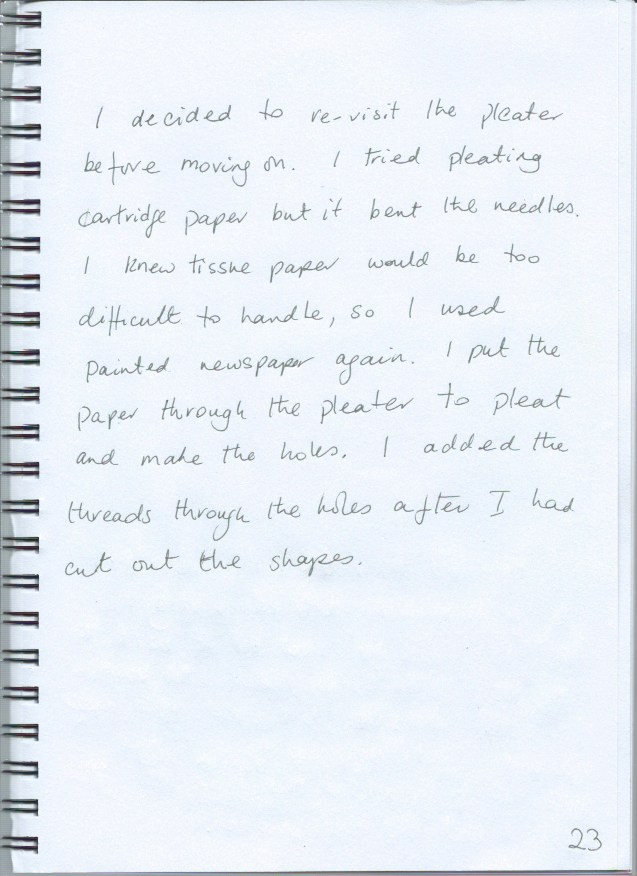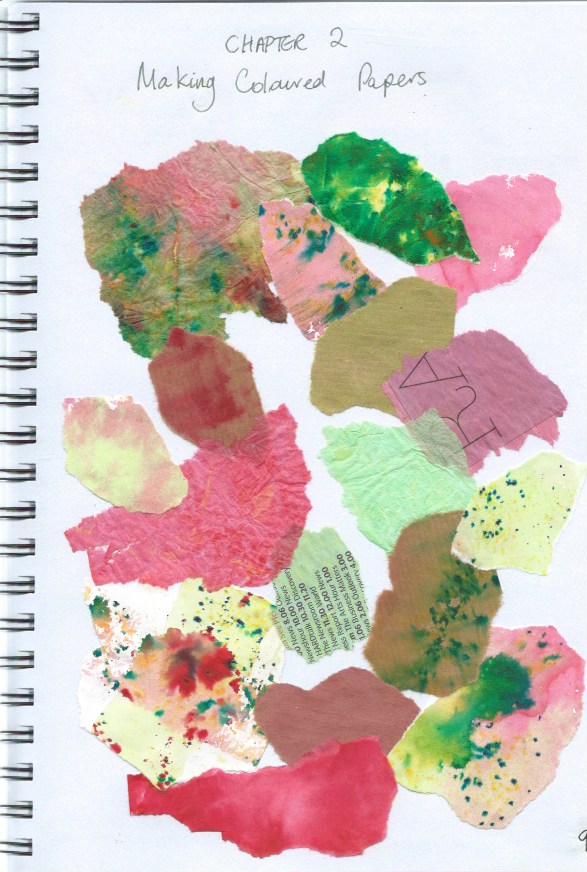I carried on with the Maltese Cross but it started to look rather cumbersome, especially when I enlarged it (page 19 (ii)), so I slimmed it down (page 17) and it developed into a more delicate shape. It turns the corner beautifully (page 19 (iii)).
I then developed the new cross by opening up the middle into a square and adding the Maltese Cross over the top, (page 18).
To help create an interlocking shape, I joined to open centred shapes together, (bottom of page 18) and used this on page 19 (vii). I really enjoyed working on Design Sheet B because I surprised myself with the shapes that developed.
With Design Sheet C, I re-worked a design that I created in Design Sheet B, but hadn't used. The counter-change exercise was quite difficult at first because I started by using tissue paper and found it very difficult with a craft knife, so gave up and changed to cartridge paper!
I had to cut the separated motif, page 21 (ii) into 8 pieces in order to pull it apart because of the angles of points. The 'arrow' shape jumped out at me as the motif to use, although I re-sized it as the shapes were getting rather large.
I wanted to rotate the arrows as shown on page 20, but I couldn't get a satisfactory pattern to develop so went for something more simple (page 21 (v)). When I had finished all the designs, I went back to the rotational design and created it on page 22.
I wandered a bit by adding the pleated paper on page 20. I just wondered if it would hold the folds, and it did!
SKETCH BOOK





























